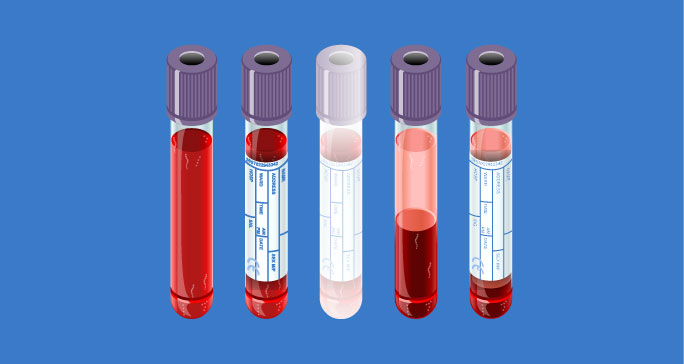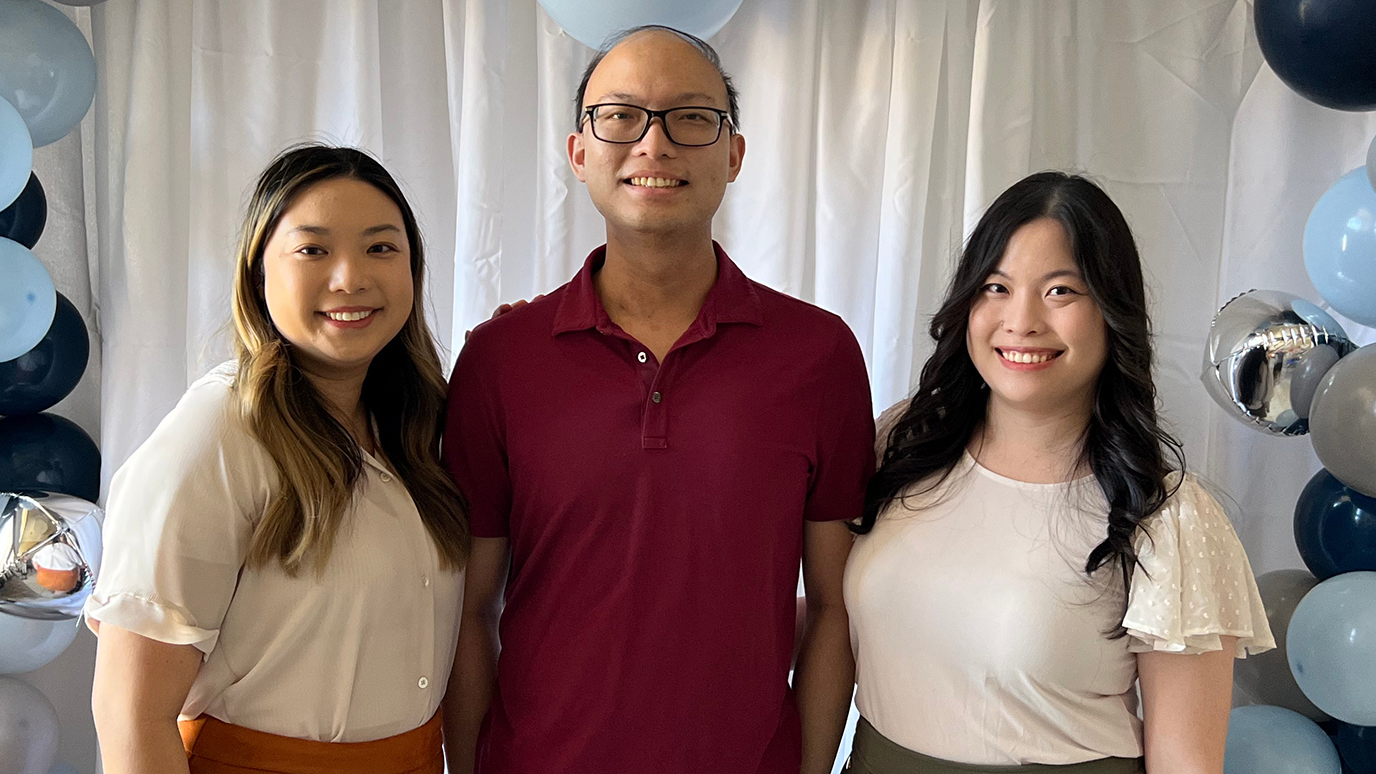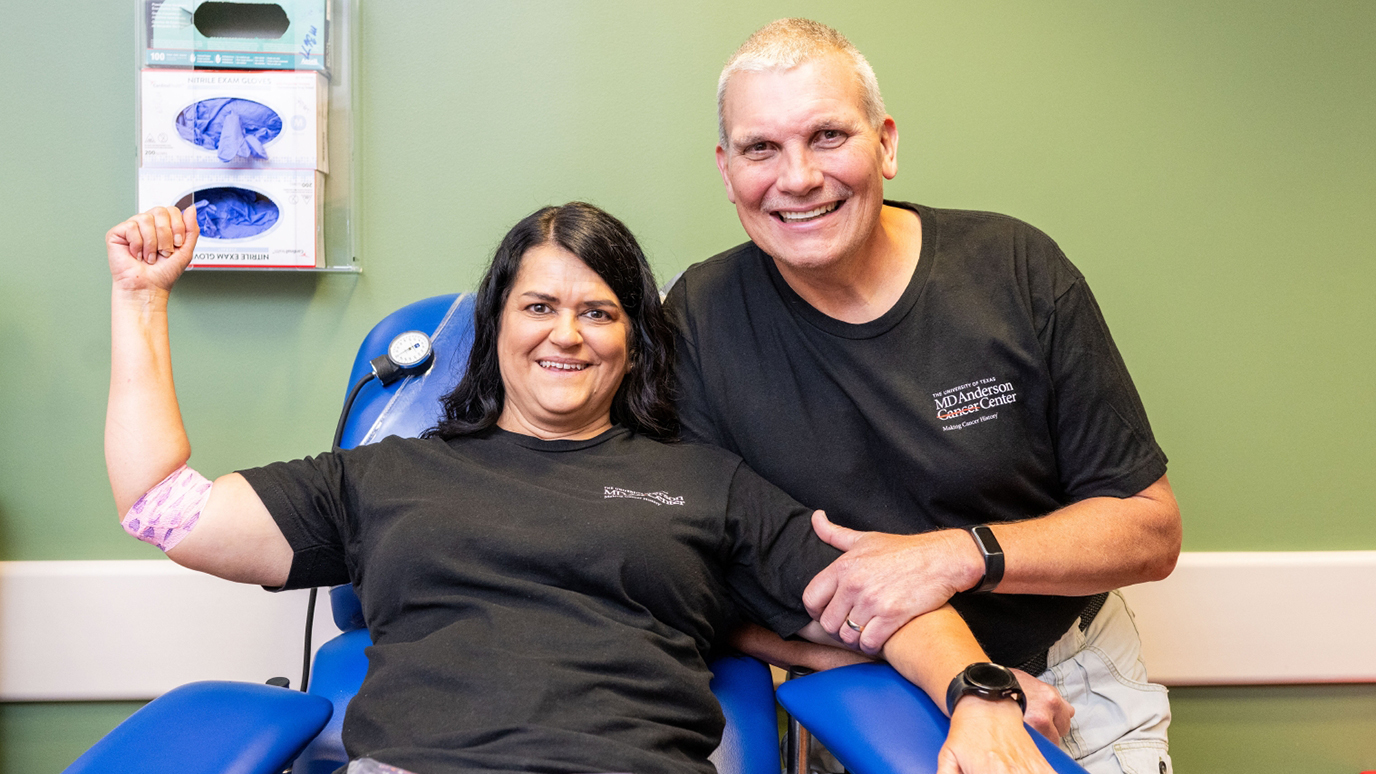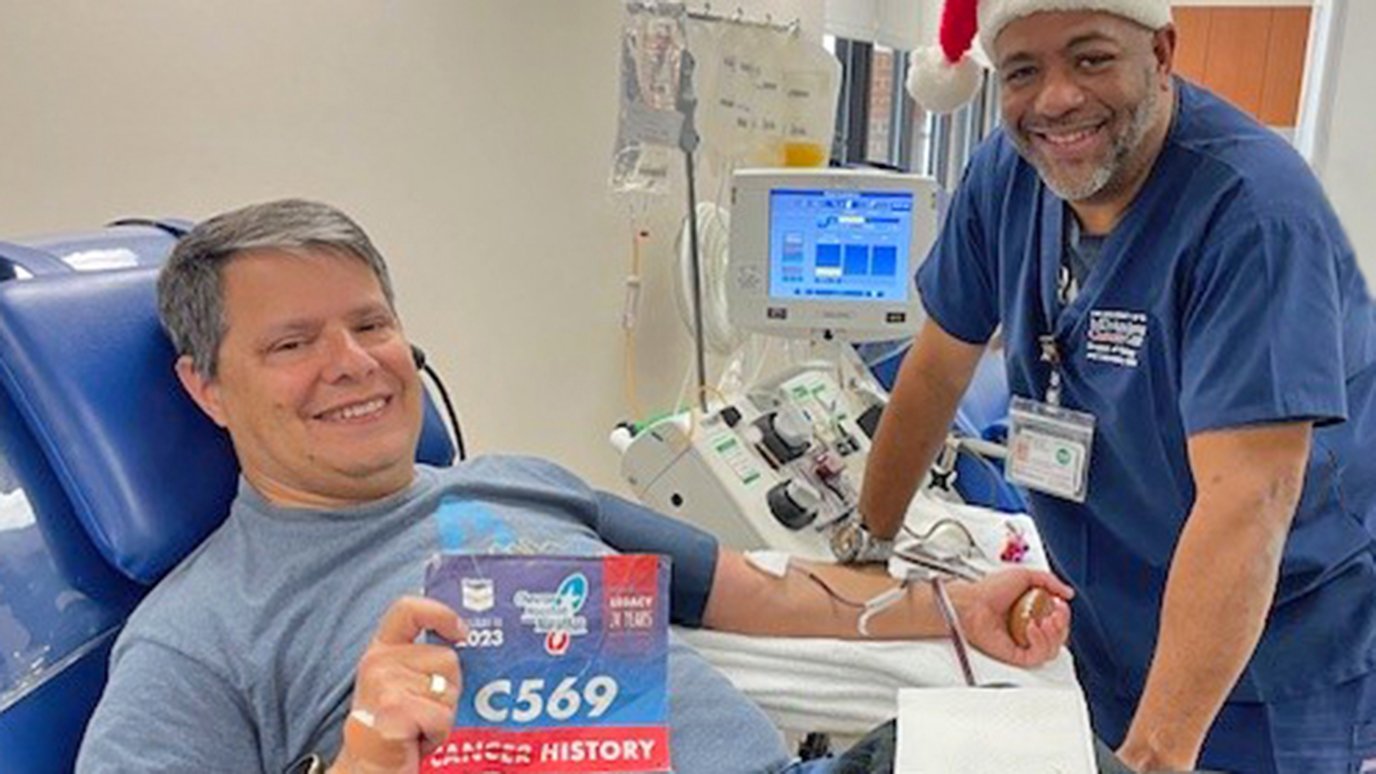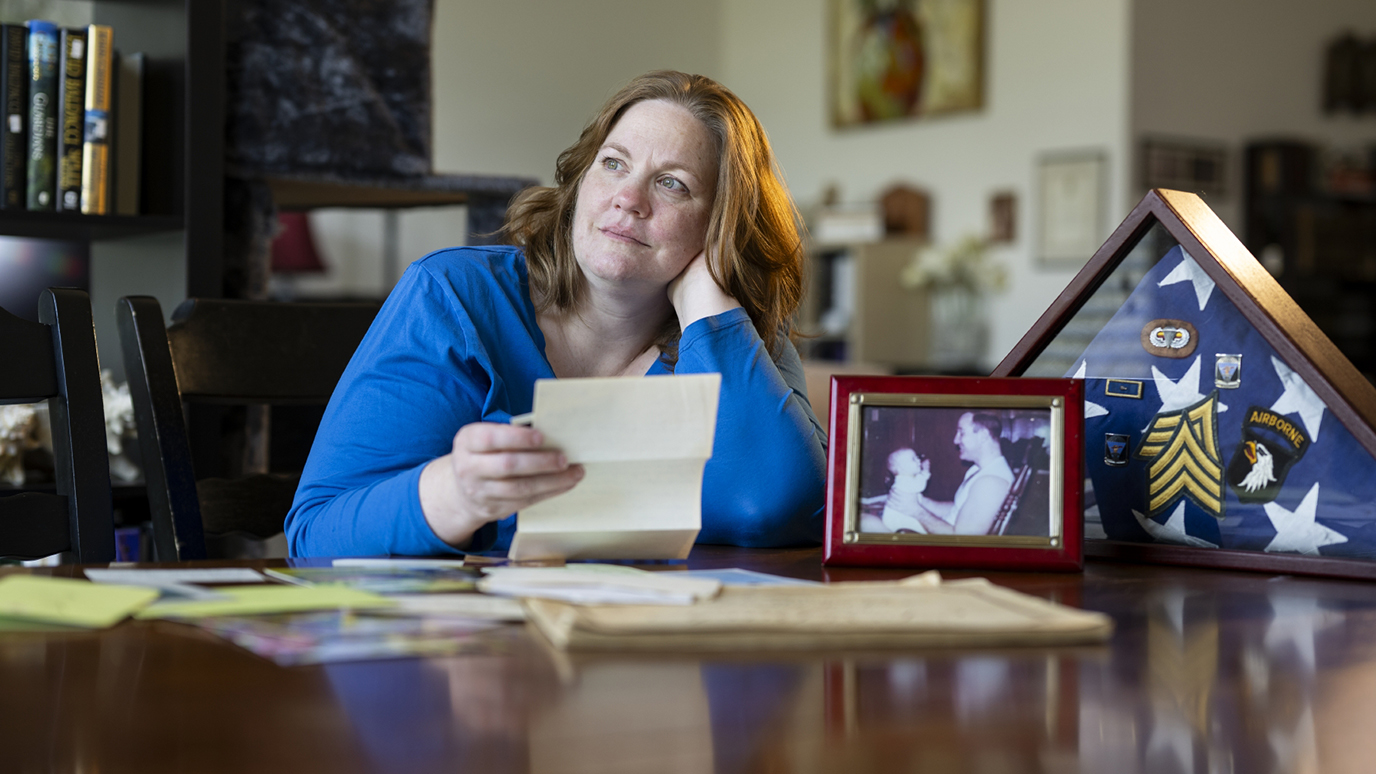- Diseases
- Acoustic Neuroma (14)
- Adrenal Gland Tumor (24)
- Anal Cancer (68)
- Anemia (2)
- Appendix Cancer (16)
- Bile Duct Cancer (26)
- Bladder Cancer (72)
- Brain Metastases (28)
- Brain Tumor (232)
- Breast Cancer (714)
- Breast Implant-Associated Anaplastic Large Cell Lymphoma (2)
- Cancer of Unknown Primary (4)
- Carcinoid Tumor (8)
- Cervical Cancer (158)
- Colon Cancer (166)
- Colorectal Cancer (116)
- Endocrine Tumor (4)
- Esophageal Cancer (44)
- Eye Cancer (36)
- Fallopian Tube Cancer (8)
- Germ Cell Tumor (4)
- Gestational Trophoblastic Disease (2)
- Head and Neck Cancer (12)
- Kidney Cancer (128)
- Leukemia (342)
- Liver Cancer (50)
- Lung Cancer (286)
- Lymphoma (278)
- Mesothelioma (14)
- Metastasis (30)
- Multiple Myeloma (100)
- Myelodysplastic Syndrome (60)
- Myeloproliferative Neoplasm (4)
- Neuroendocrine Tumors (16)
- Oral Cancer (100)
- Ovarian Cancer (172)
- Pancreatic Cancer (160)
- Parathyroid Disease (2)
- Penile Cancer (14)
- Pituitary Tumor (6)
- Prostate Cancer (146)
- Rectal Cancer (58)
- Renal Medullary Carcinoma (6)
- Salivary Gland Cancer (14)
- Sarcoma (238)
- Skin Cancer (296)
- Skull Base Tumors (56)
- Spinal Tumor (12)
- Stomach Cancer (64)
- Testicular Cancer (28)
- Throat Cancer (92)
- Thymoma (6)
- Thyroid Cancer (96)
- Tonsil Cancer (30)
- Uterine Cancer (80)
- Vaginal Cancer (16)
- Vulvar Cancer (20)
- Cancer Topic
- Adolescent and Young Adult Cancer Issues (20)
- Advance Care Planning (10)
- Biostatistics (2)
- Blood Donation (18)
- Bone Health (8)
- COVID-19 (362)
- Cancer Recurrence (120)
- Childhood Cancer Issues (120)
- Clinical Trials (630)
- Complementary Integrative Medicine (22)
- Cytogenetics (2)
- DNA Methylation (4)
- Diagnosis (232)
- Epigenetics (6)
- Fertility (62)
- Follow-up Guidelines (2)
- Health Disparities (14)
- Hereditary Cancer Syndromes (126)
- Immunology (18)
- Li-Fraumeni Syndrome (8)
- Mental Health (116)
- Molecular Diagnostics (8)
- Pain Management (62)
- Palliative Care (8)
- Pathology (10)
- Physical Therapy (18)
- Pregnancy (18)
- Prevention (916)
- Research (392)
- Second Opinion (74)
- Sexuality (16)
- Side Effects (604)
- Sleep Disorders (10)
- Stem Cell Transplantation Cellular Therapy (216)
- Support (402)
- Survivorship (320)
- Symptoms (182)
- Treatment (1786)
Leukemia survivor: How a second opinion at MD Anderson improved and shortened my treatment
5 minute read | Published October 05, 2023
Medically Reviewed | Last reviewed by an MD Anderson Cancer Center medical professional on October 05, 2023
When I was 27, I was diagnosed with acute lymphocytic leukemia (ALL). It's a type of blood cancer usually found in children and the elderly.
I started treatment near my home in Louisiana and came to MD Anderson for a second opinion when it seemed like I was moving too quickly toward a stem cell transplant.
My husband, Andrew, and I thought we’d be at MD Anderson for maybe two or three days. We ended up staying for almost five months. It worked out better than either of us could’ve anticipated.
My acute lymphocytic leukemia diagnosis
Looking back, I can see that the nose bleeds, dry cough and fatigue I’d been experiencing were all symptoms of acute lymphocytic leukemia. But I was only 27 at the time and otherwise very healthy. Cancer didn’t run in my family. I was also just starting my career as an attorney, and I was going to a lot of weddings. So, I attributed everything to being busy, traveling and allergies.
When my routine bloodwork first came back abnormal, the lab called and asked me to return for another blood draw. They thought my sample had gotten mixed up with someone else’s. But when the second, third and fourth blood draws came back abnormal, too, there was no mistaking it: my white blood cell count was elevated, and my platelet count was very low.
I didn’t understand what that meant until my doctor said, “The only time we see this is in patients with leukemia.”
I was so stunned I couldn’t even process it.
Why I sought a second opinion at MD Anderson
Normally, someone with blood test results like mine would need to be transported to a cancer facility in an ambulance. But I was feeling and acting OK, so the doctor allowed me to go home, pack a suitcase and drive myself to the hospital.
I was admitted as an inpatient immediately and started receiving IV chemotherapy just two days later. I went through three rounds of high-dose chemotherapy before requesting a second opinion.
It wasn’t that I didn’t trust my local oncologists. I felt confident that the care I was receiving from them was what I’d be getting anywhere else in the nation. It was only the fact that they wanted to move forward with a stem cell transplant so quickly that gave me a little pause. I wanted to be sure it was warranted before taking such a big step.
Fortunately, my local oncologist was completely supportive of my decision. He even gave me Dr. Hagop Kantarjian’s name and said that he was the absolute best specialist to see for leukemia.
How I benefitted from a clinical trial I couldn’t join
My husband and I called MD Anderson and made an appointment. The scheduler worked around my existing chemotherapy appointments and got me in pretty quickly. I felt like Dr. Kantarjian’s team answered all of our questions before we even got there.
The first thing Dr. Kantarjian told us when we met him at the clinic was that I wasn’t going to be doing chemotherapy anymore. He had an amazing new immunotherapy drug for me to try called blinatumomab, and he believed it was going to change the way leukemia was treated going forward.
Dr. Kantarjian wanted me to join a clinical trial using that drug, but because I’d already had three rounds of chemo, I didn’t meet the eligibility criteria. Even so, he created a treatment plan for me that closely mirrored it. He felt it would be morally wrong to put someone through the rigors of intense chemotherapy if a better option existed, and this drug was showing much better results than the previous standard of care.
My husband and I went over the data from the clinical trial with Dr. Kantarjian, and afterward, we felt we had all the information we needed to switch treatment plans. I received my first immunotherapy infusion at MD Anderson on May 31, 2022.
Immunotherapy changed my life
I wasn’t sorry to see the last of chemo. Every round knocked me down. My hair fell out less than two weeks after the first infusion. I also had to take two months off work, wear an NK95 mask and be extremely careful about what I was eating and who I was seeing.
My life did a complete 180 once I started immunotherapy. My hair started growing back, I was able to resume working part-time and I didn’t have to wear a mask anymore. The only real negative was that I had to be connected to an infusion 24/7 for four weeks at a time. But I just wore the pump as a fanny pack and made it a fashion statement.
The best part of immunotherapy
The best part of immunotherapy was how significantly it shortened my treatment period. My original plan called for eight months of chemotherapy, followed by a stem cell transplant, which would impact me significantly for most of a year, and potentially have side effects for the rest of my life.
With immunotherapy, all of my treatment was finished within nine months of my diagnosis, though I’ll continue to take a targeted therapy drug called a tyrosine kinase inhibitor once a day in pill form for another four years. I haven’t had any noticeable side effects. I didn’t need a stem cell transplant. And, I’ve been in complete remission since June 27, 2022.
What my leukemia diagnosis has taught me about clinical trials and blood donations
I always thought clinical trials were a last resort, something you did only when no other options were available or your current treatment wasn’t working. But even though I didn’t qualify to join it, a clinical trial at MD Anderson still had a massive impact on me. It changed the trajectory of my treatment plan as well as the rest of my life — and that’s pretty amazing. It’s even more comforting to know that in the event the leukemia ever returns, I still have many more treatment options.
Today, I’m also much more aware of how important blood donations are. While I was undergoing chemotherapy, I needed some type of transfusion almost every other day. Whether it was platelets or whole blood, every infusion made such an impact on me and significantly improved how I was feeling.
Before my diagnosis, I donated blood a few times myself, but back then, it was just one of those things I did without really thinking about it. Today, I am so incredibly grateful for blood donors. My need for transfusions during treatment has totally changed how I perceive their gift. Donating blood is such a little thing people can do, and yet it makes such a huge difference in a cancer patient’s life.
Request an appointment at MD Anderson online or by calling 1-877-632-6789.
Related Cancerwise Stories

It worked out better than either of us could’ve anticipated.
Courtney Fournet
Survivor

